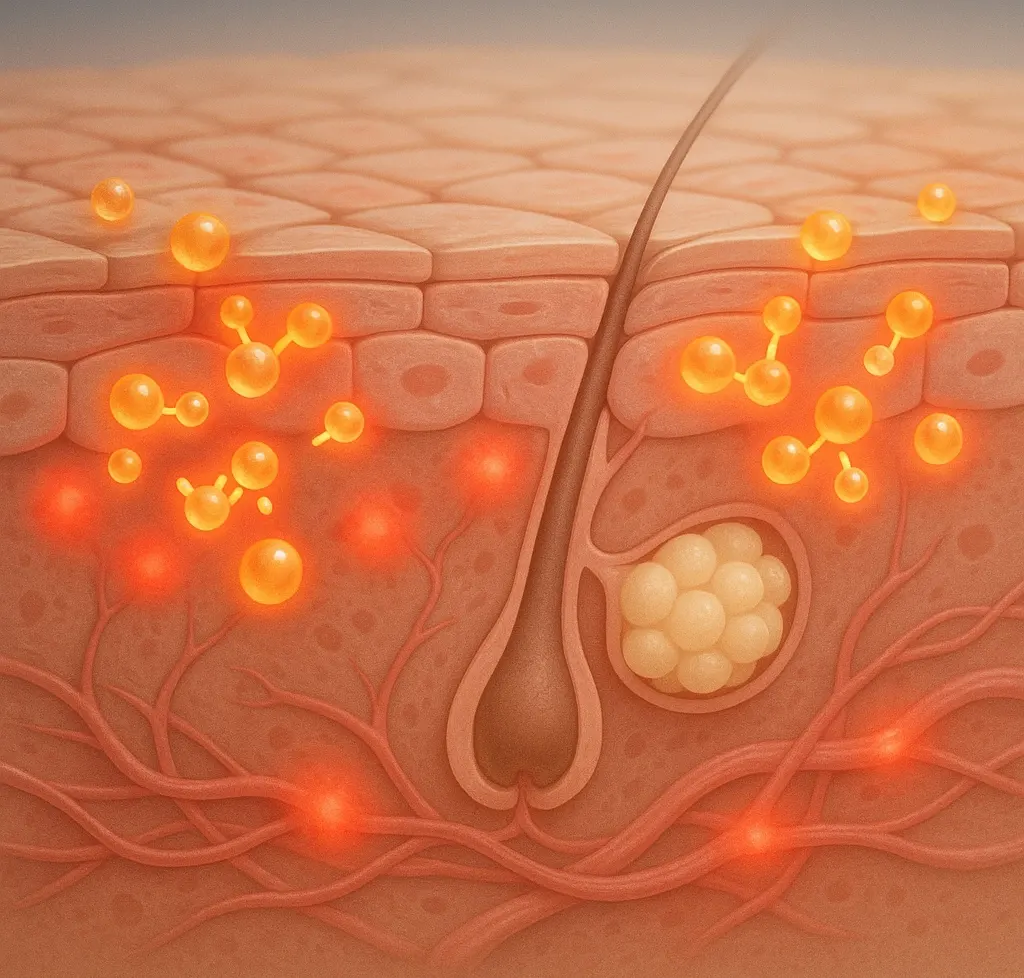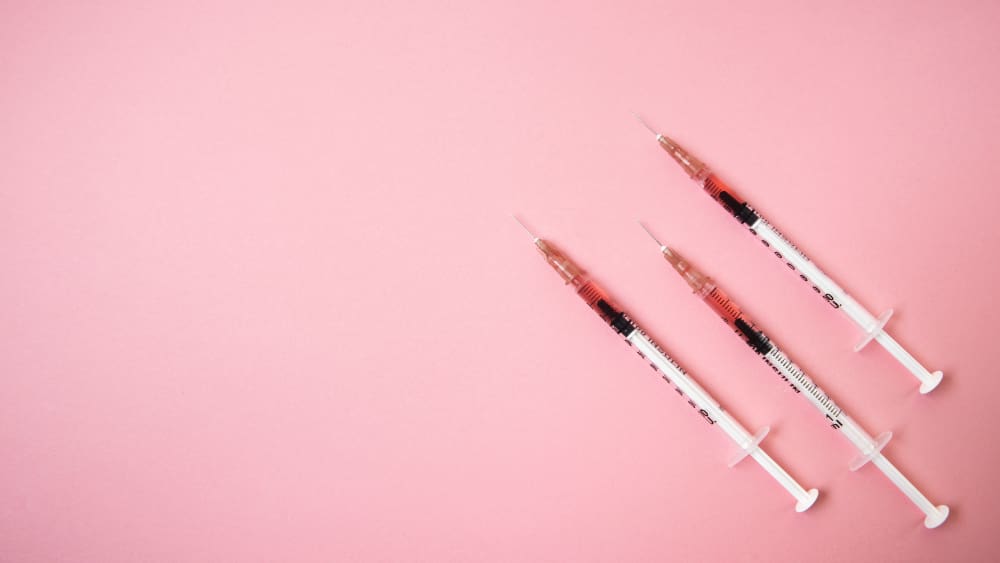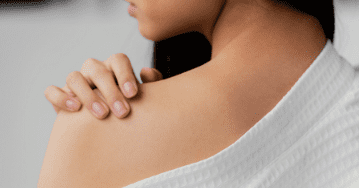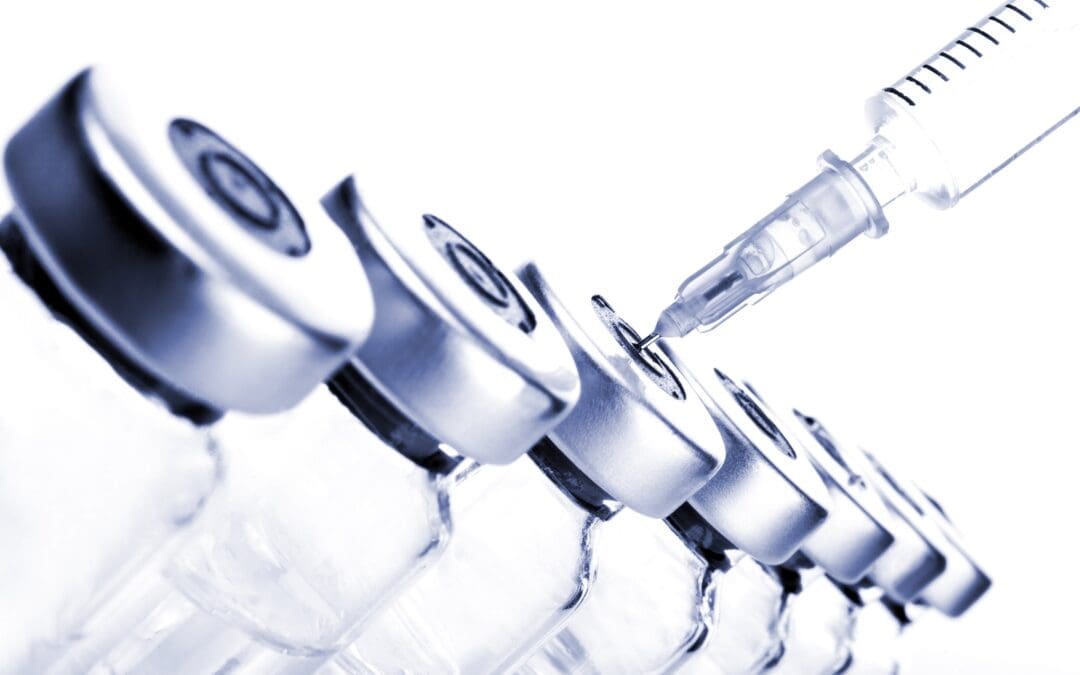How Lifestyle, Weather, and Environment Affect Flare-Ups
Ever notice how your skin seems to break out right before a big presentation or how your eczema flares up during particularly stressful weeks? You’re not imagining things. The connection between stress and skin health is very real, and it’s especially important to understand here in Arizona where our unique climate adds another layer of complexity to maintaining healthy skin.
Your skin is actually your body’s largest organ, and it’s intimately connected to your nervous system. When stress hits, your skin often bears the brunt of it through a fascinating but frustrating cascade of biological responses.
The Science Behind Stress and Your Skin
When you’re stressed, your body kicks into high gear, releasing a flood of hormones including cortisol, often called the “stress hormone.” This isn’t just happening in your head—it’s happening throughout your entire body, including your skin.
Here’s what cortisol does to your skin:
- Increases oil production: Your sebaceous glands go into overdrive, creating the perfect storm for clogged pores and breakouts
- Breaks down collagen: This protein keeps your skin firm and youthful, but cortisol speeds up its breakdown
- Triggers inflammation: This can worsen existing conditions like acne, rosacea, and eczema
- Slows healing: Cuts, scratches, and blemishes take longer to heal when you’re chronically stressed
Research shows that chronic stress can increase inflammatory markers in your skin by up to 40%, which explains why so many skin conditions seem to flare up during tough times.

Common Stress-Related Skin Problems
Acne and Breakouts
Stress-induced acne is incredibly common, affecting about 85% of people who experience chronic stress. The combination of increased oil production and inflammation creates ideal conditions for acne bacteria to thrive. What’s worse is that stress acne often appears in different areas than hormonal acne—think along your jawline, neck, and even on your body.
Eczema and Dermatitis
If you have eczema, you probably already know that stress is a major trigger. Stress compromises your skin barrier, making it easier for irritants and allergens to penetrate and cause flare-ups. In Arizona’s dry climate, this becomes even more problematic as the lack of humidity already challenges your skin barrier.
Psoriasis
This autoimmune condition has a strong stress component. Studies show that up to 80% of psoriasis flares are preceded by stressful life events. The immune system overreaction that causes psoriasis scales becomes more pronounced when stress hormones are elevated.
Rosacea
Stress is one of the top triggers for rosacea flare-ups, causing increased redness, visible blood vessels, and sometimes painful bumps. The heat and sun exposure common in Arizona can compound this problem significantly.
Arizona’s Unique Environmental Challenges
Living in Arizona presents some specific challenges when it comes to stress and skin health. Our environment can either help or hurt your skin’s ability to cope with stress.

The Heat Factor
Arizona’s intense heat creates additional stress on your skin. When temperatures soar above 100°F (which is pretty much daily in summer), your skin works overtime to regulate temperature through increased blood flow and sweating. This can:
- Exacerbate rosacea and heat-sensitive conditions
- Increase oil production, worsening acne
- Lead to dehydration, which compounds stress effects on skin
- Cause heat rash and other inflammatory conditions
Low Humidity Levels
Arizona’s desert climate means humidity levels often drop below 20%, compared to the 40-60% that’s ideal for skin health. This low humidity:
- Strips moisture from your skin barrier
- Makes existing inflammation worse
- Can trigger compensatory oil production (your skin thinks it’s dry, so it makes more oil)
- Slows healing of stress-related skin damage
UV Exposure
Even on cloudy days, Arizona’s high elevation means intense UV exposure. When your skin is already compromised by stress, UV damage becomes more problematic:
- Increases inflammatory responses
- Worsens hyperpigmentation from acne and other conditions
- Accelerates aging effects of cortisol on collagen
- Can trigger autoimmune skin conditions
Dust and Allergens
Desert dust, pollen from desert plants, and particles from dust storms can settle on stressed skin and cause additional irritation. This is particularly problematic for people with eczema or sensitive skin conditions.
Lifestyle Factors That Make Things Worse
Poor Sleep Patterns
Arizona’s long summer days and late sunsets can disrupt sleep patterns, and poor sleep is both a cause and effect of stress. When you don’t get quality sleep:
- Cortisol levels stay elevated longer
- Your skin’s natural repair processes are impaired
- Inflammation markers increase
- You’re more likely to pick at your skin or neglect your skincare routine
Dietary Stress
During busy or stressful periods, many people turn to convenience foods high in sugar, processed ingredients, and dairy—all of which can trigger or worsen skin conditions. In Arizona’s food landscape, this might mean more fast food, sugary drinks to combat heat, or neglecting hydration.
Neglected Skincare Routines
When life gets overwhelming, skincare often gets pushed to the back burner. Skipping cleansing, moisturizing, or sun protection can leave your skin more vulnerable to stress-related damage.
Increased Touching and Picking
Stress often manifests in nervous habits like touching your face, picking at blemishes, or rubbing your skin. These behaviors can:
- Introduce bacteria to stressed skin
- Worsen existing inflammation
- Create new breakouts
- Lead to scarring and hyperpigmentation
Practical Management Strategies
Stress Reduction Techniques
Mindfulness and Meditation: Even 10 minutes daily can help lower cortisol levels. Apps like Headspace or Calm make this accessible anywhere.
Regular Exercise: Physical activity helps metabolize stress hormones, but in Arizona heat, timing matters. Early morning or evening workouts prevent additional heat stress on your skin.
Deep Breathing: Simple breathing exercises can quickly lower stress responses and reduce their impact on your skin.
Arizona-Specific Skincare Adjustments
Hydration is Key: Use a humidifier indoors and choose heavier moisturizers than you might in more humid climates.
Gentle Cleansing: Stressed skin is more sensitive, so opt for gentle, non-foaming cleansers that won’t strip your skin barrier.
Consistent Sun Protection: Use broad-spectrum SPF 30+ daily, even when stressed and rushed.
Antioxidant Support: Vitamin C serums can help combat both environmental and stress-related inflammation.
Professional Treatment Options
Sometimes self-care isn’t enough, and that’s okay. Professional treatments can help reset stressed skin:
- Medical-grade facials designed for sensitive or inflamed skin
- Light therapy to reduce inflammation and kill acne bacteria
- Prescription treatments for severe stress-related conditions
- Injectable treatments to address stress-related aging concerns
When to Seek Professional Help
Consider consulting a dermatologist when:
- Stress-related skin problems persist despite consistent self-care
- You develop new or worsening symptoms
- Skin issues are affecting your confidence or quality of life
- You’re experiencing severe acne, persistent eczema flares, or other concerning symptoms
At Arizona Skin Institute, we understand the unique challenges our desert environment presents for skin health. Our team can help you develop a personalized plan that addresses both the immediate skin concerns and the underlying stress factors contributing to your skin problems.
Creating Your Action Plan
Managing stress-related skin issues requires a multi-pronged approach:
- Identify your stress triggers and work on management techniques
- Adapt your skincare routine for Arizona’s climate and your stress levels
- Maintain consistent healthy habits even during stressful periods
- Protect your skin from additional environmental stressors
- Seek professional help when needed
Remember, your skin is a reflection of your overall health and well-being. By addressing stress holistically and adapting to Arizona’s unique environmental challenges, you can maintain healthier, more resilient skin even during life’s most challenging moments.
The key is consistency and patience—both with your skincare routine and your stress management practices. Your skin (and your overall well-being) will thank you for the investment.

Skin Purging vs Breakouts: How to Tell the Difference
If you’ve ever started a new skincare product only to find your skin looking worse before it looks better, you’re not alone. It’s a frustrating experience that often leads to confusion: Is my skin...

The Impact of Hormonal Changes On Skin
Hormones play a crucial role in regulating many bodily functions, and one of the most visible ways they affect us is through our skin. Throughout different life stages—puberty, pregnancy, menopause,...

The Connection Between Diet and Skin Health
The old saying, "You are what you eat," holds a lot of truth when it comes to skin health. Your diet provides the essential nutrients your skin needs to stay resilient, clear, and youthful. What you...

Exploring The Benefits of B12 Injections
In today’s fast-paced world, maintaining optimal health and energy levels is essential for leading a fulfilling and productive life. While proper nutrition and lifestyle habits play significant...

10+ Rare Dermatologic Disorders: From Blue to Self-Peeling Skin
While common skin conditions like acne, eczema, and psoriasis are widely discussed, rare skin diseases like argyria and peeling skin syndrome remain a mystery to most people. Perhaps even you tilted...

Exploring Botox and Dysport in 2024
In the quest for youthful, rejuvenated skin, cosmetic treatments have become increasingly popular. Among these, Botox and Dysport stand out as effective solutions for reducing wrinkles and achieving...

Skin Cancer Prevention for Outdoor Workers in Sunny Arizona
Working outdoors in Arizona requires keeping your skin healthy and protected from the harsh, unforgiving sun. With year-round warm weather and over 300 days of sunshine, cumulative sun exposure and...

